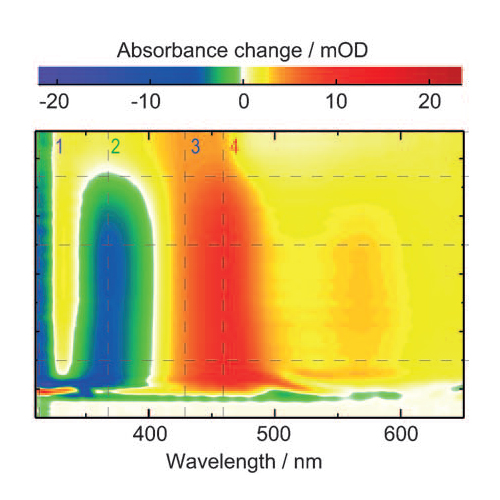The Excited-State Decay of 1-Methyl-2(1H)-pyrimidinone is an Activated Process
09-Jun-2011
ChemPhysChem, 2011, DOI: 10.1002/cphc.201001063, Volume 12, Issue 10, pages 1880–1888, published on 09.06.2011
ChemPhysChem, online article
ChemPhysChem, online article
The photophysics of 1-methyl-2(1H)-pyrimidinone (1MP) dissolved in water is investigated by steady-state and time-resolved fluorescence, UV/Vis absorption, and IR spectroscopy. In the experiments, excitation light is tuned to the lowest-energy absorption band of 1MP peaking at 302 nm. At room temperature (291 K) its fluorescence lifetime amounts to 450 ps. With increasing temperature this lifetime decreases and equals 160 ps at 338 K. Internal conversion (IC) repopulating the ground state and intersystem crossing (ISC) to a triplet state are the dominant decay channels of the excited singlet state. At room temperature both channels contribute equally to the decay, that is, the quantum yields of IC and ISC are both approximately 0.5. The temperature dependence of UV/Vis transient absorption signals shows that the activation energy of the IC process (2140 cm−1) is higher than that of the ISC process (640 cm−1).











